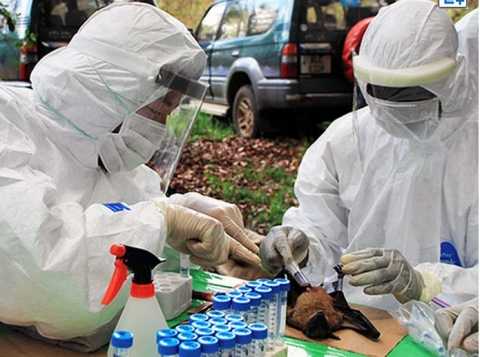
Hokkaido University researchers are working in Zambia to prevent the spread of the Ebola virus outbreak in western Africa that has killed more than 1,000 people.
Established in 2007 with the assistance from Japan’s science ministry and other organizations, the university’s base in the Zambian capital of Lusaka has surveyed pathogenic bacteria in wild animals and how those bacteria spread.
The base is located inside a facility of the University of Zambia’s school of veterinary medicine. Three permanent staff members from Hokkaido University Research Center for Zoonosis Control work there.
Samples from patients suspected of having the Ebola hemorrhagic fever in Zambia are sent to the University of Zambia’s school of veterinary medicine. But the University of Zambia does not have the expertise to accurately determine if a person is infected with the Ebola virus.
The Hokkaido University’s base, which has been providing assistance to the local university, is substantively charged with detecting Ebola cases in the country.
The Japanese scientists have already examined samples from those who returned to Zambia from the sites of the Ebola epidemic in western Africa. They have reported no infections so far.
The Hokkaido University researchers use PCR technology, a method that proliferates genes sampled from patients’ blood to detect their genotypes. This method requires three to four hours to detect an infection. The scientists say they plan to cut the time to one hour under a more efficient testing technique.
After the World Health Organization declared a state of emergency on Aug. 8 over the Ebola outbreak, the Zambian government decided to prepare systems to quickly detect Ebola patients and quarantine them if the current epidemic reaches the southern African nation.
Although there is no cure for Ebola hemorrhagic fever, Ayato Takada, a virology professor at the Research Center for Zoonosis Control who has long studied the virus, said the latest outbreak offers an opportunity for pharmaceutical companies to tackle the deadly disease.
“I hope the epidemic will urge pharmaceutical companies throughout the globe to proceed with research and development of a new treatment,” Takada said.
(This article was written by Rieko Matsumoto and Hiromi Kumai.)

 JOIN DRIVERN TAXI AS PARTNER DRIVER TODAY!
JOIN DRIVERN TAXI AS PARTNER DRIVER TODAY!










